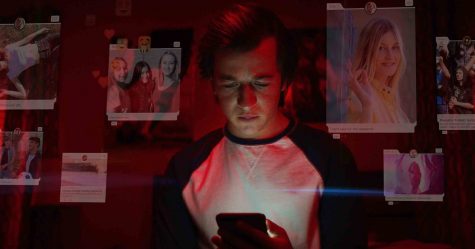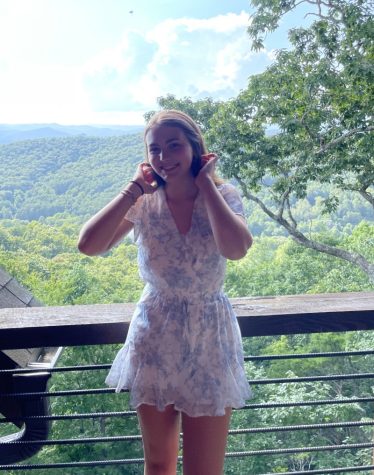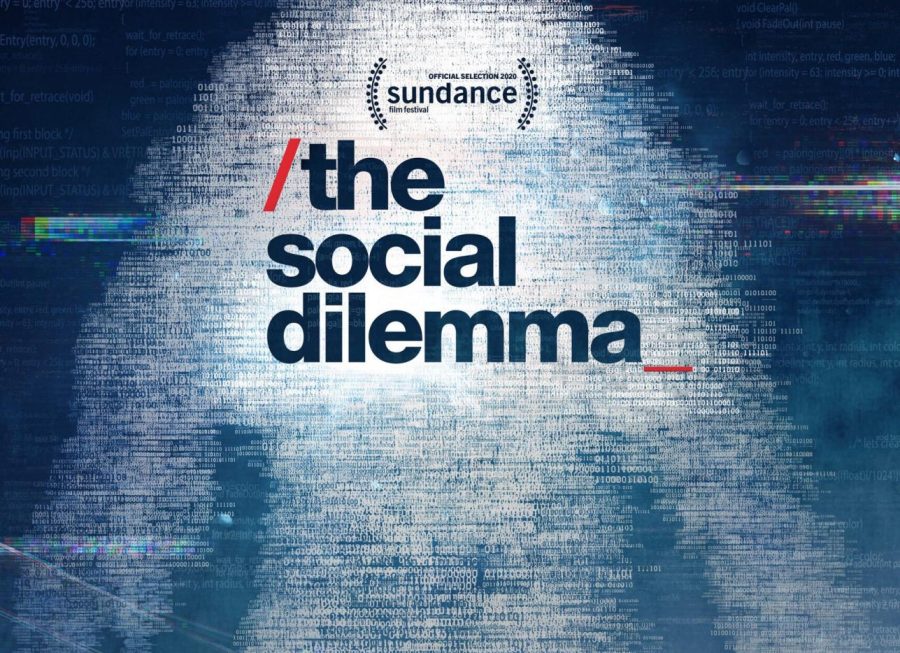Why You Should Watch “The Social Dilemma”
What Social Media is really like…from the creators themselves
Many of you have probably heard of the Netflix documentary “The Social Dilemma.” When I first heard about it in August, I immediately thought “Oh, I definitely shouldn’t tell my mom about this. She’s going to make me watch it with her, isn’t she?” That fateful day came a couple weeks ago, after she watched an episode of “Ellen.” Ellen and Tristan Harris, a main character in the documentary, were talking about social media addiction and these platforms manipulate our behavior. Ironically, I was playing on my phone when my mom called me into her room and made me watch the interview with her. I was annoyed by yet another adult telling me my phone was bad for me, and I just wanted to be addicted in peace. But the following Saturday night, I put my phone in the other room, and watched The Social Dilemma.
I was skeptical at first when eerie music started playing, and it seemed a little dramatic. The documentary opened with about ten different people introducing themselves. From the creator of the like button on Facebook to a former YouTube engineer, they all shared their experiences working at social media companies. As I watched, I realized they didn’t say all phones were bad or that social media didn’t bring good in the world; they just felt they had a responsibility to show us the dangers of social media. They actually developed social media for good, unaware that they would snowball into the platforms we now know. From watching The Social Dilemma, I learned about the implications of social media on my life and how it affects the world around me.
Social media platforms do not charge a subscription fee, so the companies earn all of their money from advertisements. As you probably know, the ads we see are tailored to us. We see things we are most likely to buy. What this means is that we are the product the platforms are selling to the advertisers. They buy access to our attention and our screens through the social media we use. Every post or video we see is specifically placed in that order to make us spend more time on our phones.
 As Justin Rosenstein, a former product manager at Google, says, “We are more profitable to a corporation if we’re spending time staring at a screen, staring at an ad, than if we’re spending that time living our life in a rich way.” What scares me is how well social media works to keep me on my phone. For example, one of my goals is to get good grades, so what am I doing spending an hour on TikTok watching some random person doing something ridiculous when I get home, rather than studying? The Social Dilemma teaches us an important lesson to resist the temptation to keep watching our phone.
As Justin Rosenstein, a former product manager at Google, says, “We are more profitable to a corporation if we’re spending time staring at a screen, staring at an ad, than if we’re spending that time living our life in a rich way.” What scares me is how well social media works to keep me on my phone. For example, one of my goals is to get good grades, so what am I doing spending an hour on TikTok watching some random person doing something ridiculous when I get home, rather than studying? The Social Dilemma teaches us an important lesson to resist the temptation to keep watching our phone.
Just like ads, the information they feed users is tailored to our beliefs, likes, dislikes, and political views. An example from the documentary was to search “Climate change is” in Google’s search engine. Depending on where you are in the world, what you use Google for, and what data they know about you, you will see different results. When I typed this in, I got two results for Quizlet. Not surprising! Obviously, the entire world is probably not searching for climate change quizlets. This makes me understand the information Google provides is not necessarily the same that someone else sees. I suggest you try this experiment to see what Google will show for you. By polarizing our views and beliefs online, especially in this political climate, the world is becoming more and more divided. We cannot see the point of views of another person. Our understanding and ability to hear each other’s opinions is failing rapidly. When the interviewers asked what could happen if the pattern of polarization continued, answers included civil war and the downfall of democracy.
One of the last dangers examined in the documentary was fake news. According to a statistic from The Social Dilemma, fake news spreads six times faster than a true news story. Determining if an article, tweet, or video is factual is becoming ever more challenging. Coronavirus is just one example of how dangerous this can be, for consuming misinformation about a potentially deadly virus can put people’s lives in danger. Social media also makes it easier for the truth to get buried in lies. Organizations that are not checked for accuracy spread “clickbait” news for views and quick cash. The more easy it is for these lies to spread across these platforms, the more serious these situations can become.
From watching The Social Dilemma, I better understand how to use social media and its potential dangers. Honestly, I can’t say I deleted all social media or even have a lower screen time. But, I definitely learned how I can protect myself. The documentary advises us to just check google when we see a suspicious news article and to seek out other views and beliefs that we cannot see online. I highly recommend you watch The Social Dilemma to inform yourself of how to use social media responsibly and to be cautious when you do.

Gigi Glennon is a member of the class of 2023. As well as The Blue and Gold, she was involved in the yearbook, retreat leading, and ceramics. Outside of school, she enjoyed hiking and hanging out with her dogs. Her favorite book series is The Selection Series by Kiera Cass, and her favorite food is tiramisu. While at Marist, she enjoyed sharing her voice and creativity on The Blue and Gold, serving as an Editor-in-Chief her senior year.



